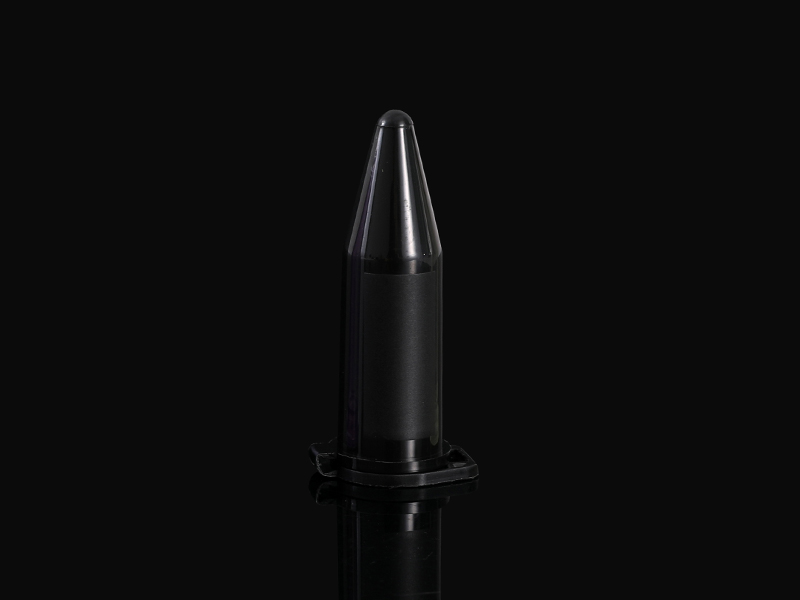The centrifuge tube, that is, the tube-shaped sample container, may be provided with a sealing cap or a gland.
According to volume, it can be divided into:
Large-capacity centrifuge tubes (500mL, 250mL), etc.
Ordinary centrifuge tubes (50mL, 15mL), etc.
Microcentrifuge tubes (2mL, 1.5mL, 0.65mL, 0.2mL), etc.
Divided by material
1. Glass centrifuge tube
Due to the fragile quality of such centrifuge tubes, high-speed centrifuges generally do not use glass tubes and do not use much.
2. Steel centrifuge tube
The steel centrifuge tube has high strength, no deformation, heat resistance, freezing resistance and chemical corrosion resistance.
3. Plastic centrifuge tube
The advantages of plastic centrifuge tubes are transparent or semi-transparent, low hardness, and can be used to remove gradients by puncturing method, which is cheap. Disadvantages are easy deformation, poor corrosion resistance to organic solvents, and short service life.
According to the shape of the tube bottom
1. Sharp bottom centrifuge tube
2. Round bottom centrifuge tube
According to the shape of the tube cover
Centrifuge tube with lid
2. Socket centrifuge tube
3. Screw centrifuge tube
The role of the tube cover
The biggest role is to prevent the leakage of samples, especially when used for radioactive or highly corrosive samples. Another function is to prevent sample evaporation and support the centrifuge tube to prevent the centrifuge tube from deforming.
Material of centrifuge tube
The commonly used materials of plastic centrifuge tubes are polyethylene (PE), polycarbonate (PC), polypropylene (PP), etc., among which polypropylene PP centrifuge tube performance will be relatively good,
Notes on the purchase of centrifuge tubes
When selecting plastic centrifuge tubes, consider polypropylene PP plastic centrifuge tubes as much as possible. Pay attention to check whether the tube cover is tight and whether it is tight during the test, so that the liquid can be leaked upside down.

Precautions
High-speed refrigerated centrifuge
1. Cannot be used by those without training and assessment.
2. Choose the right rotor and speed, never use it at the fastest speed.
3. Choose a suitable temperature, usually 4℃, except the organic solvent, do not drop below minus zero, so as not to freeze, damage the centrifuge tube and rotor.
4. Before turning the head, you must wipe the tube with a hole cleaning rod, and carefully check for cracks and white spots on the bottom of the hole. If so, turn around and scrap.
5. The amount of solution loaded in the centrifuge tube must be appropriate. The stainless steel tube has no cover and can only fit 2/3, and the plastic tube can be installed to the shoulder. The cap must be tightly closed and no leakage is allowed. Empty tube centrifugation will deform. The use of organic solvents in plastic pipes must comply with regulations.
6. The centrifuge tubes must be placed in pairs and must be strictly balanced with a deviation of <0.1g.
7. No idling without the rotor is allowed. The handle must be used to prevent the rotor from slipping. The rotating head should be put down lightly and locked firmly. When unscrewing the handle, hold the handle by hand and only turn the head. The rotor cover should be tightly closed, and centrifugation is not allowed without the cover.
8. It is forbidden to open the cover during centrifugation, and it is not allowed to rest on the centrifuge. If there is abnormal sound and vibration, the machine will be stopped immediately.
9. After the rotor is used, it must be removed from the rotor compartment and dried in time, and the hole of the tube should be carefully cleaned with a hole wiper. If the solution overflows, it must be cleaned, wipe the condensate in the rotor compartment, open the door to dry the rotor compartment.
10. You must make an appointment to use the centrifuge, and you must register after use.
Ordinary centrifuge
1. Before centrifuging, carefully check the rotor for any foreign objects.
2. The centrifuge tubes must be carefully balanced.
3. If the engine room is not clean, the centrifuge tube should be sealed with plastic film.
4. Start slowly and then accelerate.
5. Do not open the lid during centrifugation.
6. Do not brake by hand.

 简体中文
简体中文











